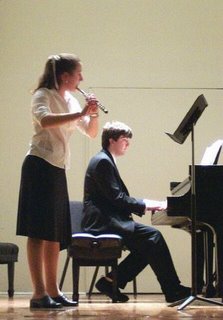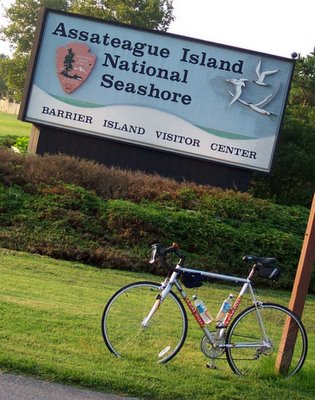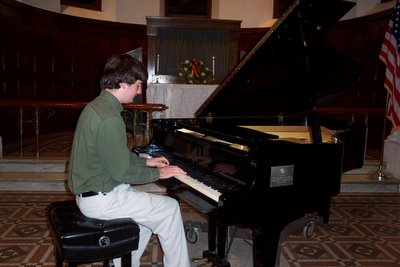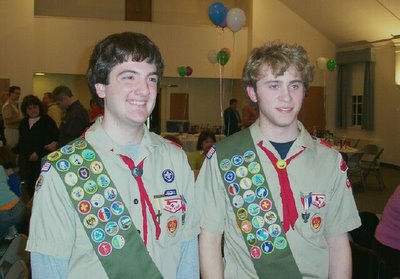Billy's Been BLOGGIN' Again
Sunday, February 26, 2006
Friday, February 24, 2006
Friday Weigh In
but headed in the right direction . . .
s l o w l y !
Enough about that.
Went to an excellent play last night at University of Maryland:
Savage in Limbo by John Patrick Shanley
SYNOPSIS:
In this darkly comic story of love and loathing, five “thirty-somethings” bring their outsized personalities and thwarted desires to a hole-in-the-wall bar in the Bronx. Insults are served, drinks fly, and nobody seems to get what they want (or do they)? This snapshot of American life comes from Bronx native and Pulitzer Prize-winning playwright (Doubt) John Patrick Shanley.
Thursday, February 23, 2006
Wednesday, February 22, 2006
Two Months to Cycling Season
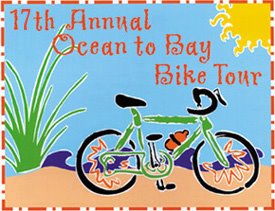
This looks like a nice ride to kick off the 2006 bicycling season.
Choose from a 20-mile, 35-mile or 50-mile route in Delaware on Saturday April 22 at 9:00am.
Find registration information at the Bethany-Fenwick Area Chamber of Commerce web site.
New Wednesday Feature
Let's start with a link to a nationwide (actually continent-wide) calendar of folk, world and roots music events. That way my out-of-state reader(s) won't feel slighted:
Dirty Linen
And a great local calendar:
The DC Bluegrass Union
My picks for this weekend:
Friday, Feb. 24 ~ The Grandsons ~ Roots Cafe at Seidel's Bowling Center ~ Baltimore ~ (410) 485-5171
Saturday, Feb. 25 ~ Banjer Dan with JB Beverly & The Wayward Drifters, Junkrod Joe & The Cadillac Hearse, Cat Deluxe ~ Frazier's on the Avenue ~ Baltimore ~ (410) 662-4914
So, while we're thinking Roots Cafe, how about some links to a few local (and some not-so-local) venues:
Roots Cafe
The Cellar Stage
Institute of Musical Traditions
Music Center at Strathmore
Strand-Capitol Performing Arts Center
Gordon Center for Performing Arts
Common Ground on the Hill
Theater:
Center Stage
Vagabond Players
Fells Point Corner Theater
Everyman Theater
Spotlighters
Theatre Project
Performance Workshop Theater
. . . additional Theater listings
At University of Maryland, College Park:
Clarice Smith Performing Arts Center
School of Music
Department of Dance
Department of Theater
Highfalutin:
Baltimore Symphony Orchestra
Baltimore Opera
Lyric Opera House
France-Merrick Performing Arts Center
Baltimore Museum of Art
Library of Congress
Well, as it turns out, this is more of a list of links than a calendar of events. So, it's interactive! Start clicking. I'll try to refine it next week. Hope you find something you like.
Tuesday, February 21, 2006
Music at U of Maryland
Starting this week, weigh-in will be on Friday mornings only!
Went to this last night:

Monday, February 20, 2006 at 8PM
UM Repertoire Orchestra
Takuya Nishiwaki and Paul Kim, conductors
Dekelboum Concert Hall
The campus-wide orchestra presents its second concert of the season. Featuring the Act II Finale of Mozart's The Marriage of Figaro, presented in a concert-stage version featuring singers from the Maryland Opera Studio. Also experience the Russian splendor of the First Symphony of Vasily Kalinnikov.
Loved it!
Monday, February 20, 2006
New Toy
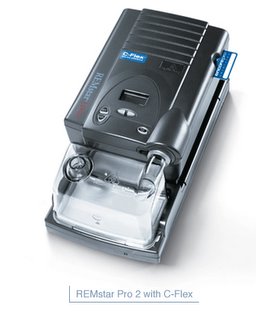
I am now the proud owner of a brand new Respironics REMstar Pro 2 with C-Flex. What the heck is that? It is commonly known as a CPAP machine -- Continuous Positive Airway Pressure. While I am sleeping, it provides pressurized air through a hose and mask as a treatment for my sleep apnea. I started using it on Thursday night but I could only tolerate it for a few hours. I slept with it a little longer each successive night until last night when I made it through the entire night.
A reliable source tells me that this machine is the BEST one available. My health insurance company really came through for me on this one. Since the health insurance industry is so often maligned, have to give credit where credit is due .... Thanks Aetna!
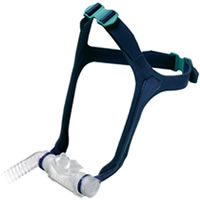 The Darth Vader headgear that goes along with the CPAP is the RESMED Mirage Swift Nasal Pillows System. Sexy, eh? The black helmet is optional.
The Darth Vader headgear that goes along with the CPAP is the RESMED Mirage Swift Nasal Pillows System. Sexy, eh? The black helmet is optional. 
Saturday, February 18, 2006
You Gotta CLICK
No ...... I did not buy the Chips Ahoy cookies!
A.M. Weight: 245 The struggle continues.
I went to University of Maryland to visit two of my sons. Daniel and I went to a dance performance by http://www.dance.umd.edu/ performed in http://claricesmithcenter.umd.edu/2006/c/facilities/venues/dance.
Afterwards we went over to the http://www.crs.umd.edu/facilities/fo_fac.html to watch David play volleyball.
Great stuff!
Thursday, February 16, 2006
Hmmm . . .
F**k this sh*t. I'm going to the store and buy myself a big-ass bag of Chips Ahoy cookies and a gallon of nice cold milk.
Guess what I noticed at a recent high school reunion. After thirty years, the funny people are still funny. The bullsh*tters are still full of it. The tall people are still tall. The short people are still short. The skinny people are still skinny. And the fat people are still fat! PEOPLE DON'T CHANGE!
Have a nice day.
Wednesday, February 15, 2006
Calories and Fat Grams
Blatantly ripped off from University of Maryland Medical Center:
http://www.umm.edu/heart/caloric.html
How Many Calories and Fat Grams Do You Need?
Assess your activity level, first
This formula will help you to calculate the number of calories and percentage of fat grams you need each day at your current weight if you are relatively inactive to moderately active.
- moderately active person = a working person who doesn't do a great deal of exercise
- relatively inactive person = a person with a sedentary lifestyle
- if you're more than moderately active, calorie needs may have to be adjusted so that you don't lose weight
To maintain your current weight, follow this formula
To determine the number of calories and fat grams you need to consume each day in order to lose or gain weight, consult your doctor or a registered dietitian.
Write your body weight in the equation that fits your activity level and gender. Then, multiply.
Moderately active male:
_____ pounds x 15 calories = _____ total calories per day.
Moderately active female:
____ pounds x 12 calories = _____ total calories per day.
Relatively inactive male:
_243_ pounds x 13 calories = _3159_ total calories per day.
Relatively inactive female:
____ pounds x 10 calories = _____ total calories per day.
Take total calories and multiply by 30 percent.
_3159_ calories per day x .30 = _948_ calories from fat per day.
Take calories from fat per day and divide by 9 (there are 9 calories per gram of fat):
_948_ calories from fat per day divided by 9 =_105_ fat grams per day.
Remember, saturated fats should account for only 10 percent of the total fat grams consumed.
So, just for the sake of nice round numbers, lets call it:
MAXIMUM: 3,000 calories per day
MAXIMUM: 100 fat grams per day (10 grams saturated fat)
Of course, the goal is not to maintain my current weight.
So, I must stay below these numbers and increase physical activity.
Tuesday, February 14, 2006
A Gift for You!
Since this BLOG is about as exciting as watching paint dry, I thought I might throw in this photo. We had snow over the weekend and I went out today in search of something interesting to share with the few people who might visit this site more than once.


Actually it's not Valentine's Day at all. The Catholic Church removed St. Valentine from the official calendar in 1969. His existence is now considered apocryphal. Saints Cyril and Methodius are now remembered by the church on February 14.
Did you get a Cyril and Methodius in your mailbox?
Monday, February 13, 2006
Sunday, February 12, 2006
Sodium BAD, Potassium GOOD !
Another dietary measure to lower blood pressure is to consume a diet rich in potassium. A potassium-rich diet also blunts the effects of salt on blood pressure, may reduce the risk of developing kidney stones, and possibly decrease bone loss with age. The recommended intake of potassium for adolescents and adults is 4,700 mg/day. Recommended intakes for potassium for children 1 to 3 years of age is 3,000 mg/day, 4 to 8 years of age is 3,800 mg/day, and 9 to 13 years of age is 4,500 mg/day. Potassium should come from food sources. Fruits and vegetables, which are rich in potassium with its bicarbonate precursors, favorably affect acid-base metabolism, which may reduce risk of kidney stones and bone loss. Potassium-rich fruits and vegetables include leafy green vegetables, fruit from vines, and root vegetables. Meat, milk, and cereal products also contain potassium, but may not have the same effect on acid-base metabolism.
Sources of potassium:
- Baked white or sweetpotatoes, cooked greens (such as spinach), winter (orange) squash
- Bananas, plantains, many dried fruits, oranges and orange juice, cantaloupe, and honeydew melons
- Cooked dry beans
- Soybeans (green and mature)
- Tomato products (sauce, paste, puree)
- Beet greens
How Much is TOO Much?
Oooops! Up a pound. Did something wrong yesterday. Oh well, that's OK, I can work it off today shovelling the ten inches of snow that fell last night.
If I am going to start counting calories, carbs, fat, protein and sodium, I need to know the standards. I did not have any luck searching for a site that would lay these all out for me in simple terms. So, I guess I will have to seek them out one at a time. Today, SODIUM.
University of Iowa Health Care says this:
Sodium is an important mineral that keeps the fluids in our bodies properly regulated. We need about 200-500 milligrams of sodium daily to stay healthy. The recommendation is to eat less than 2400 milligrams. That is about one teaspoon of salt per day. Most Americans, however, consume 2 to 5 teaspoons of salt per day, which adds up to 12,000 milligrams.
http://www.uihealthcare.com/topics/cardiovascularhealth/card3031.html
OK, so that covers the Sodium ... 2400 mg (2.4 grams).
I'll be outside shovelling the snow. TTFN
Saturday, February 11, 2006
Fat-Free? How dumb do I look?
I'll stick with the standard version. Forget the low-fat, low-carb, low-sodium stuff. I'll just eat less of the regular foods, thank you very much.
I have not yet started keeping a strict count of my calories or grams of fat, sugar and sodium but I'm pretty sure I have been consuming a lot less lately.
Here's an excerpt from an interesting page:
http://www.reducetriglycerides.com/diet_triglycerides_sugar.htm
At present, the USDA recommends limiting added sugars, from packaged foods and the sugar bowl, to:
24 grams a day (6 teaspoons) if you eat 1,600 calories
40 grams (10 teaspoons) for a 2,000-calorie diet
56 grams (14 teaspoons) for a 2,400-calorie diet, and
72 grams (18 teaspoons) for a 2,800-calorie diet.
As you can see, this is even less than 12 teaspoons (48 grams) of a sugar a day recommended by the recent WHO's report for an average 2,000-calorie diet.
What you should do then? First of all, cut back on:soft drinks (40 grams of sugar per 12 ounces) - nutritionally empty "liquid candy" - by far the biggest source of sugar in the average American's diet
fruit "drinks," "beverages," "ades," and "cocktails" as they are essentially non-carbonated soda pop; Sunny Delight, Fruitopia, and other fruit juices have only 5-10 percent juice and are loaded with calories and can be as fattening as pop
candy, cookies, cakes, pies, doughnuts, granola bars, pastries, and other sweet baked goods
fat-free cakes, cookies, and ice cream as they may have as much added sugar as their fatty counterparts and they're often high in calories ("fat-free" on the package doesn't mean fat-free on your waist or thighs).
Instead drink water, eat more vegetables and low-sweet fruits. And don't worry about the natural sugars from them.
Cardiology 101
I thought for sure I would be up a pound or two after the Pittsburgh trip.
John said the piano audition went well. Now we wait for a letter in the mail.
My doctor called me last night. Now that's weird! First of all, for the doctor to be calling me. And secondly ... at eight o'clock on a Friday night??? Anyway, after looking over my ECG from the sleep study, he wants me to go see a cardiologist. Great! How old am I? ... 80?
Seems that in addition to the LBBB, I'm skipping a few beats here and there and peppering in a few extras every now and then --- PVCs.
http://www.americanheart.org/presenter.jhtml?identifier=4695 says this:
Premature ventricular contractions (PVCs), also known as "extrasystoles," are "extra" heartbeats. They arise from an irritable area in the heart's lower pumping chambers (the ventricles). PVCs interrupt the normal heart rhythm and cause an irregular beat. This is often felt as a "missed beat" or a "flip-flop" in the chest. PVCs are often harmless, but when they occur very often or repetitively, they can lead to more serious rhythm disturbances.
"IRRITABLE" eh? There's that word again. I'll show ya irritable!
Thursday, February 09, 2006
Wednesday, February 08, 2006
Busy Day -- I had to stop for PIE.
I drove up to Harrisburg, Pennsylvania today for the big Eastern Sports and Outdoor Show. (See: http://www.easternsportshow.com ) On my way home I had to stop to use the rest room at a Bob Evans Restaurant. Well, I figured as long as I'm in here, I'll sit at the counter and have a cup of coffee. And, as long as I'm having a cup of coffee, I might as well have a nice slice of apple pie to go with it. And, as long as I'm having a slice of pie, I might as well have a nice scoop of vanilla ice cream on top! Damn that Bob Evans!
Anyway, the Eastern Outdoor Show was enjoyable. I only made one purchase; about 200 feet of rope. Sounds weird I know, but I needed some new lines to use on my canoe and it always comes in handy for camping. So, twenty bucks ... plus about fifteen in gas, five to park and eleven for admission. Hmmm ... fifty bucks for ROPE ! ! ! But hey, you can't put a price tag on the thrill of walking around and looking at all of the other great stuff. (And it's really nice rope!)
Tuesday, February 07, 2006
Monday, February 06, 2006
Super Bowl Setback
UP a pound and a half! . . . Damn!
Yesterday was Super Bowl Sunday, which means Super Bowl Party, which means plenty of food and drink and a very good time. Well, you can't suffer every day. So, I enjoyed the party and the food and ONE Margarita drink.
This morning I searched the internet for diet and nutrition information. Counting fat grams and calories and body mass index and what to eat and what not to eat gets very confusing. The best tip I found was the simplest tip:
The best way to lose weight is to cut back on the number of calories you eat and be more physically active.
See: http://win.niddk.nih.gov/publications/myths.htm
LBBB on my ECG
Electrical impulses that cause your heart to beat (contract) originate in the upper-right chamber of the heart (right atrium). They travel to the lower chambers of the heart (right and left ventricles) through a bundle of fibers that divide into right and left branches. Normally, the electrical impulses move through both branches at the same speed. But if a block exists in one of the branches (bundle branch block), the impulses must take a detour to the affected side. This slows them down.
Bundle branch block is typically due to degenerative disease, such as cardiomyopathy, or scar tissue from heart surgery or heart attack. In some cases, the cause can't be determined.
Bundle branch block typically causes no signs or symptoms. It doesn't affect the rate or rhythm of your heart. It's usually found incidentally on an electrocardiogram done for some other reason.
Typically, bundle branch block needs no treatment. But a severe blockage may lead to a very slow heart rate (bradycardia) that requires a pacemaker. A blockage of the heart's electrical system isn't the same as narrowing or blockage of the coronary arteries, which provide blood to the heart.
Source: http://www.mayoclinic.com/health/bundle-branch-block/HQ00359
Sunday, February 05, 2006
My Profile Photo
It would be terribly embarrassing for me to tell you how many hours I spent trying to make this photo appear in my little profile at the top of this blog.
(Did I mention IRRITABILITY in that list of possible characteristics associated with my SLEEP APNEA?)

Still a Long Way to Go
Another pound and a half!
My experience with diets has been that the first ten pounds falls off like magic. Then I hit the wall and the real struggle begins.
Saturday, February 04, 2006
Headed in the Right Direction
Down a pound and a half in just one day!
Probably just a normal weight fluctuation, but I will take it as encouraging news.
I started off the day with a cup of Green Tea and a small piece of fruit. I had only water to drink with lunch and dinner and no snacking or beverages other than water all day. I thought my lunch was reasonable; 2 slices of turkey on two pieces of pumpernickel bread with a little mustard. I did misbehave and eat some left-over french fries with my sandwich.
Because of a special event, my dinner was a trifle out of line. My son was awarded the rank of Eagle Scout, the highest honor in Boy Scouting. At the Court of Honor we enjoyed a pasta dinner with fruit, garden salad, and bread. I had a moderate portion and did not have any cake for dessert.
All-in-all, I think it was a pretty good first day.
Archeological evidence suggests that tea leaves steeped in boiling water were consumed as many as 500,000 years ago. Botanical evidence indicates that India and China were among the first countries to cultivate tea. Today, hundreds of millions of people drink tea around the world, and studies are now suggesting that one variety of tea in particular -- green tea (Camellia sinensis) -- has many health benefits.
You have what?
What is Obstructive Sleep Apnea?
The most common kind of sleep apnea is called Obstructive Sleep Apnea Syndrome. Sleep apnea means "cessation of breath." It is characterized by repetitive episodes of upper airway obstruction that occur during sleep, usually associated with a reduction in blood oxygen saturation.
(My sleep study revealed that I stop breathing as much as 9 times per hour while sleeping. My blood oxygen saturation level drops as low as 79%. Normal blood oxygen saturation is 95 to 100%.)
In other words, the airway becomes obstructed at several possible sites. The upper airway can be obstructed by excess tissue in the airway, large tonsils, a large tongue and usually includes the airway muscles relaxing and collapsing when asleep. Another site of obstruction can be the nasal passages. Sometimes the structure of the jaw and airway can be a factor in sleep apnea.
What are the symptoms?
- excessive daytime sleepiness
- frequent episodes of obstructed breathing during sleep. (The patient may be unaware of this symptom -- usually the bed partner is extremely aware of this).
Associated features may include:
- loud snoring
- morning headaches
- unrefreshing sleep
- a dry mouth upon awakening
- chest retraction during sleep in young children (chest pulls in)
- high blood pressure
- overweight
- irritability
- change in personality
- depression
- difficulty concentrating
- excessive perspiring during sleep
- heartburn
- reduced libido
- insomnia
- frequent nocturnal urination (nocturia)
- restless sleep
- nocturnal snorting, gasping, choking (may wake self up)
- rapid weight gain
- confusion upon awakening
How serious is sleep apnea?
It is a potentially life-threatening condition that requires immediate medical attention. The risks of undiagnosed obstructive sleep apnea include heart attacks, strokes, impotence, irregular heartbeat, high blood pressure and heart disease. In addition, obstructive sleep apnea causes daytime sleepiness that can result in accidents, lost productivity and interpersonal relationship problems. The severity of the symptoms may be mild, moderate or severe.
Friday, February 03, 2006
One Day at a Time
I have decided to set my long-term goal at 200 pounds (90 kg).
The National Institutes of Health (NIH) make the following recommendations at this web page:
http://www.nhlbi.nih.gov/health/public/heart/obesity/lose_wt/recommen.htm
- The initial goal of weight loss therapy should be to reduce body weight by about 10 percent from baseline. With success, and if warranted, further weight loss can be attempted.
- Weight loss should be about 1 to 2 pounds per week for a period of 6 months, with the subsequent strategy based on the amount of weight lost.
This would make my initial goal 248 - 25 = 223 pounds.
There are 20 weeks until the first day of summer (June 21).
1 to 2 pounds (1.5) for 20 weeks .... 1.5 x 20 = 30 pounds
So, an initial goal of 220 pounds should be attainable.
Hide the cookies and wish me luck!





